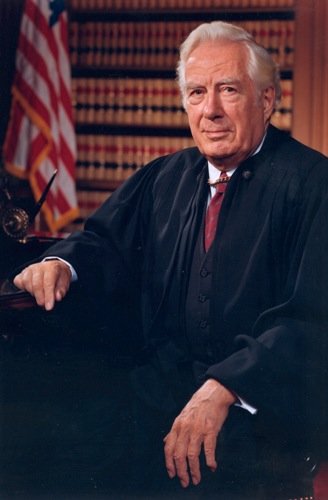Spence v. Washington
Case Overview
CITATION
418 U.S. 405 (1974)
ARGUED ON
January 9, 1974
DECIDED ON
June 25, 1974
DECIDED BY
Legal Issue
Does an “improper use” statute that prohibits the display of the American flag with any symbols or adornments attached violate the First Amendment?
Holding
Yes, an “improper use” statute violates the right to freedom of speech under the First Amendment.
Background
In 1965, Harold Spence, a college student, taped a peace symbol to an American flag and hung it upside down in his window in protest of the United States’ role in the invasion of Cambodia and the shooting at Kent State University. Police arrested Spence under Washington’s “improper use” statute, which prohibited the display of the American flag with any adornments. Spence stated his protest was an attempt to change the perception of the American flag. He stated, “I felt there had been so much killing and that this was not what America stood for. I felt that the flag stood for America and I wanted people to know that I thought America stood for peace.”
Spence was initially tried in a bench trial in a local court. The judge in his bench trial found Spence guilty, but his case was then heard before a jury on appeal. In his jury trial, Spence was found guilty and sentenced to 10 days in confinement and ordered to pay a $75 fine. Spence’s conviction was overturned by the Washington Court of Appeals on the grounds that the “improper use” statute was too broad. Ultimately, the Washington Supreme Court rejected the lower court’s reversal and upheld Spence’s conviction.
Students protesting the Vietnam war by displaying an upside-down American flag. | Credit: Twin Cities CBS
Summary
6 — 3 decision for Spence
Spence
Washington
Brennan
Marshall
Stewart
Rehnquist
White
Blackmun
Burger
Powell
Douglas
Opinion of the Court
In a per curiam opinion, the Court held that Washington’s “improper use” statute violated the right to freedom of speech under the First Amendment. Relying on their decision in Stromberg v. California (1931), the Court found that Spence was within his First Amendment rights to display an altered flag to protest or otherwise express his views. The Court characterized Spence’s protest as “a pointed expression of anguish by appellant about the then-current domestic and foreign affairs of his government.” In response to the state’s attempt to justify the improper use statute with a breach-of-the-peace argument, the Court found that “it is totally without support in the record,” noting that Spence’s behavior was entirely peaceful and led to no instance of a public disturbance.
The Court concluded, “He [Spence] displayed it as a flag of his country in a way closely analogous to the manner in which flags have always been used to convey ideas. Moreover, his message was direct, likely to be understood, and within the contours of the First Amendment. Given the protected character of his expression and in light of the fact that no interest the State may have in preserving the physical integrity of a privately owned flag was significantly impaired on these facts, the conviction must be invalidated.”
Concurring Opinion by Justice Douglas
In his brief concurrence, Justice William Douglas relied on the Iowa Supreme Court’s decision in State v. Kool (1973), in which they found unconstitutional a statute that made it a crime to “cast contempt upon, satirize, deride, or burlesque [the] flag.” Douglas concluded with a quote from the Iowa Supreme Court’s which noted that “if absolute assurance of tranquility is required, we may as well forget about free speech. Under such a requirement, the only ‘free’ speech would consist of platitudes. That kind of speech does not need constitutional protection.”
Dissenting Opinion by Chief Justice Burger
In his brief dissent, Chief Justice Burger argued that the Court was overstepping its role by striking down a statute enacted by a state legislature. He wrote, “That is not our function, however, and it should be left to each State and ultimately the common sense of its people to decide how the flag, as a symbol of national unity, should be protected.”
Dissenting Opinion by Justice Rehnquist
In his dissent, Justice Rehnquist disagreed with the Court’s finding that the State does not have the authority to restrict speech in this manner in furtherance of important interests, writing that the “right of free speech, though precious, remains subject to reasonable accommodation to other valued interests.” Rehnquist argued that Washington had a legitimate interest in preserving the American flag as a symbol of national unity. He referenced the Court’s decision in Halter v. Nebraska (1907), in which upheld Nebraska’s statute protecting the integrity of the American flag because “it may reasonably be affirmed that a duty rests upon each State in every legal way to encourage its people to love the Union with which the State is indissolubly connected.” Rehnquist noted that it is the character of the flag, not the physical cloth, that the State is trying to protect.
Rehnquist explained that while the state cannot compel an individual to own a flag or punish criticism of the flag, they ought to be able to protect it. He wrote that Washington’s ‘improper use’ statute “withdraws a unique national symbol from the roster of materials that may be used as a background for communications,” and ultimately concluded that the statute was constitutional.









